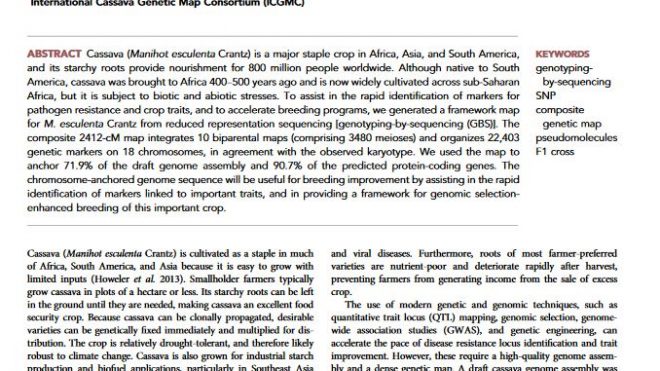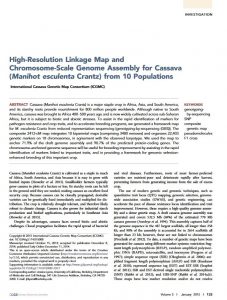Cassava (Manihot esculenta Crantz) is a major staple crop in Africa, Asia and South America, and its starchy roots provide nourishment for 800 million people worldwide. Although native to South America, cassava was brought to Africa 400–500 years ago. It is now widely cultivated across sub-Saharan Africa, but it is subject to biotic and abiotic stresses. To assist in the rapid identification of markers for pathogen resistance and crop traits, and to accelerate breeding programmes, we generated a framework map for M. esculenta Crantz from reduced representation sequencing (genotyping-by-sequencing [GBS]). The composite 2412-cM map integrates 10 biparental maps (comprising 3,480 meioses) and organises 22,403 genetic markers on 18 chromosomes, in agreement with the observed karyotype. We used the map to anchor 71.9% of the draft genome assembly and 90.7% of the predicted protein-coding genes. The chromosome-anchored genome sequence will be useful for breeding improvement by assisting in the rapid identification of markers linked to important traits, and in providing a framework for genomic selection-enhanced breeding of this important crop.
Region: Africa, Asia, South America
Date published:
2015
Published by:
International Cassava Genertic Map Consortium
Type of resource:
Journal article
Resource topic:
Cassava
Project/Programme: Not specific
Pest/Disease: Not specific
File type:
External link (1,294 KB)




